The Charming Interactions of Yellow Cockatiel with Other Pets
Explore the delightful dynamics between Yellow Cockatiels and other pets, as we delve into real-life case studies that highlight their unique and companionable nature.

Key Takeaways:
- Yellow cockatiels, particularly the lutino mutation, exhibit unique behaviors when interacting with other pets.
- Understanding the social dynamics between yellow cockatiels and other animals can enhance cohabitation.
- Case studies reveal insights into the compatibility and bonding potential of yellow cockatiels with various pet species.
Yellow cockatiels, with their bright yellow feathers and cheerful dispositions, are a popular choice for pet lovers around the world. These birds, known scientifically as Nymphicus hollandicus, are not only beautiful but also have the ability to form fascinating interactions with other pets. This article delves into the world of yellow cockatiels, exploring their behavior, compatibility, and the charming ways they interact with other animals in a domestic setting.
The Lutino Cockatiel: A Colorful Introduction
The lutino cockatiel is one of the most sought-after color mutations in the aviculture world. These birds are characterized by their white to light yellow plumage and bright orange cheek patches. The lutino gene removes the gray pigment, resulting in a bird with a yellowish tint, red eyes, and a yellow crest. Male lutino cockatiels often have a more vibrant yellow face, while females may display a lighter shade.
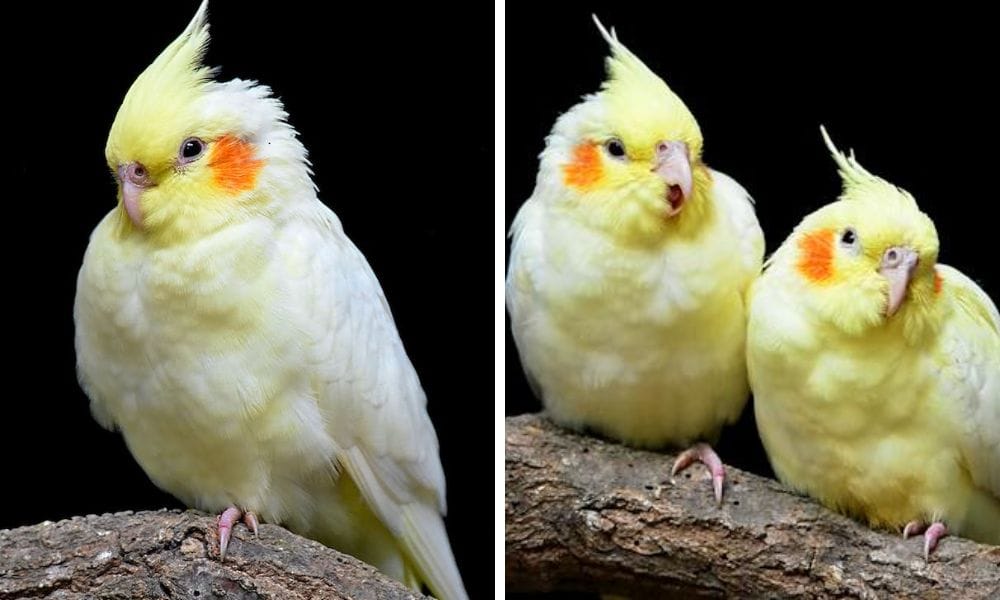
Understanding Cockatiel Mutations
Cockatiels come in a variety of color mutations, each with its own unique set of characteristics. The second cockatiel mutation to be discovered was the pearl pied, which exhibits a pattern of white plumage with prominent white flashes on the wings and tail feathers. The cinnamon cockatiel, another popular breed, has a warm, cinnamon hue replacing the primarily grey feathers. The pied mutation, including the lutino pied, is known for its random patches of color, often resulting in a stunning mix of yellow and white feathers.
Social Dynamics of Yellow Cockatiels
When it comes to social interactions, yellow cockatiels are quite gregarious. They enjoy the company of other birds and can often be seen engaging in playful activities. Male and female cockatiels may exhibit different social behaviors, with males being more inclined to talk cockatiels and show off their bright yellow feathers, while females may be more reserved.
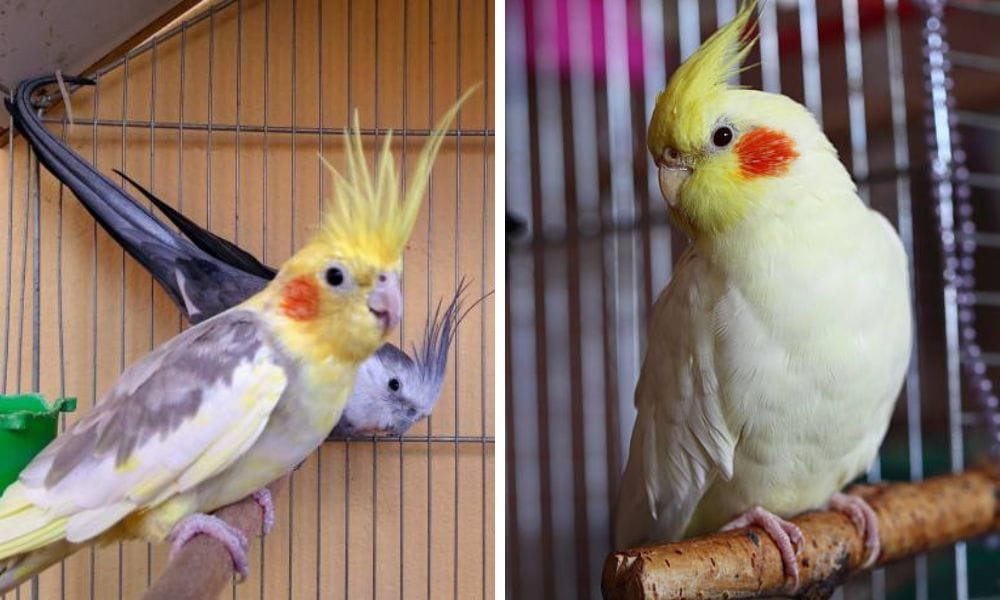
Compatibility with Other Pets
Yellow cockatiels can be compatible with a variety of other pets, but it's important to introduce them carefully. These birds are part of the parrot family and can be quite social with other parrots, but interactions with different species should be monitored. A case study from the Florida Parrot Jungle showed that with proper introduction and supervision, yellow cockatiels could peacefully coexist with other birds and even some mammals.
Case Study: The Bond Between a Yellow Cockatiel and a Dog
In a heartwarming case study, a gorgeous lutino cockatiel named Sunny formed an unlikely friendship with a golden retriever. Despite the size difference, the two animals shared a bond that was evident in their daily interactions. Sunny would often perch on the dog's back, and the two would spend hours together, showcasing the potential for interspecies friendships.

The Role of the Nest Box in Socialization
For breeding pairs of yellow cockatiels, the nest box plays a crucial role in their interaction. It provides a safe space for the female pearl cockatiel to lay eggs and for both parents to care for their young. The presence of a nest box can also influence the social dynamics within the bird cage, as it becomes a focal point for the birds' activities.
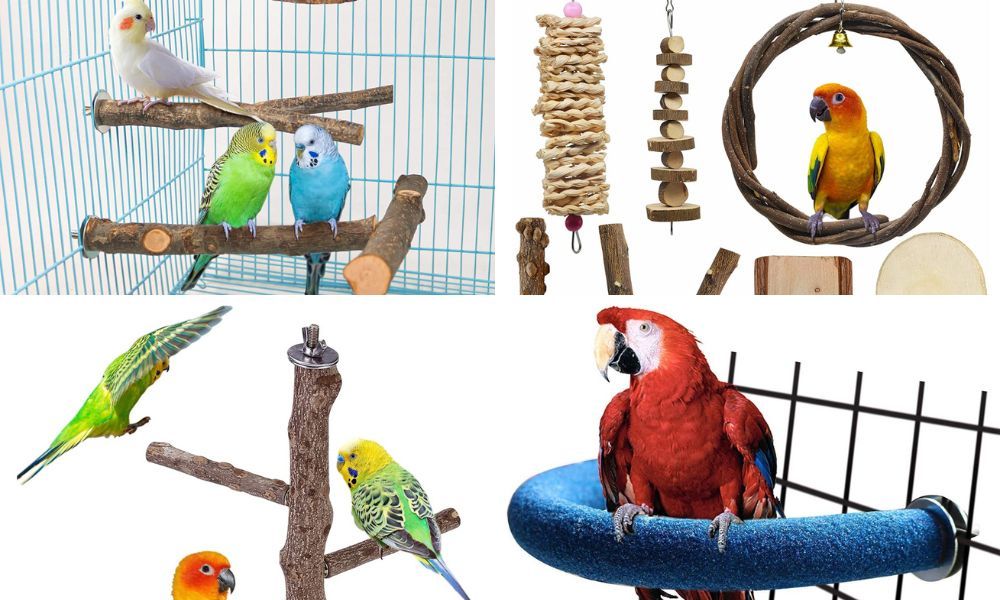
Housing Considerations for Multiple Pets
When housing yellow cockatiels with other pets, it's essential to consider the size and setup of the bird cage. Cockatiels need enough space to stretch their long tails and wings, and the cage should be equipped with perches and toys to encourage interaction. If other birds or animals are present, ensuring that each has its own space is crucial to prevent territorial disputes.

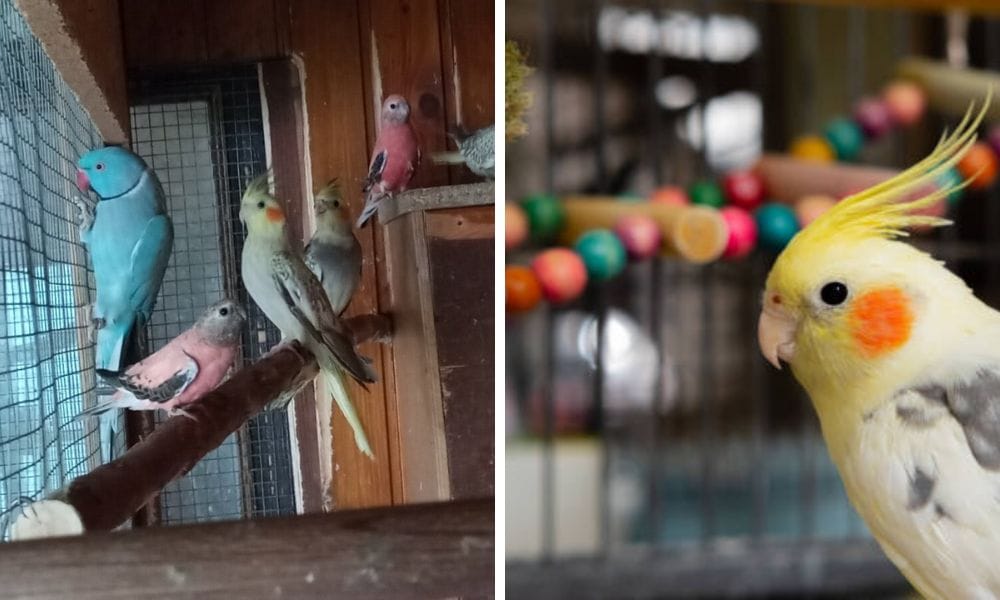
The Distinctive Orange Cheek Patch: A Signature Trait
Have you ever noticed the vibrant orange cheek patch that adorns a male cockatiel's face? It's like a splash of sunset against their light grey feathers, making them a standout in the beautiful pet bird category. This distinctive feature is not just for show; it plays a crucial role in communication and mate attraction within the cockatoo family. The intensity of the orange can vary, often brighter in males, which they flaunt during courtship displays to woo their female counterparts.
Interestingly, the orange cheeks are also a window into the health of these charming birds. A vivid orange cheek patch can indicate a well-nourished and healthy cockatiel, while a dull or pale patch might signal a need for dietary or health assessment. Observing these subtle changes in a cockatiel's plumage can help owners and aviculturists ensure their feathered friends are in top condition. It's these small details that make the animal world so fascinating, isn't it?
The Evolution of Cockatiel Plumage: From Wild Type to Modern Mutations
Cockatiels in the wild type display a classic look with grey bodies and the iconic orange cheek patch, but have you seen the variety of colors in domesticated cockatiels? From the striking albino to the serene blue, breeding has introduced a kaleidoscope of colors. These mutations can affect more than just the aesthetics; they can influence behavior and social interactions.
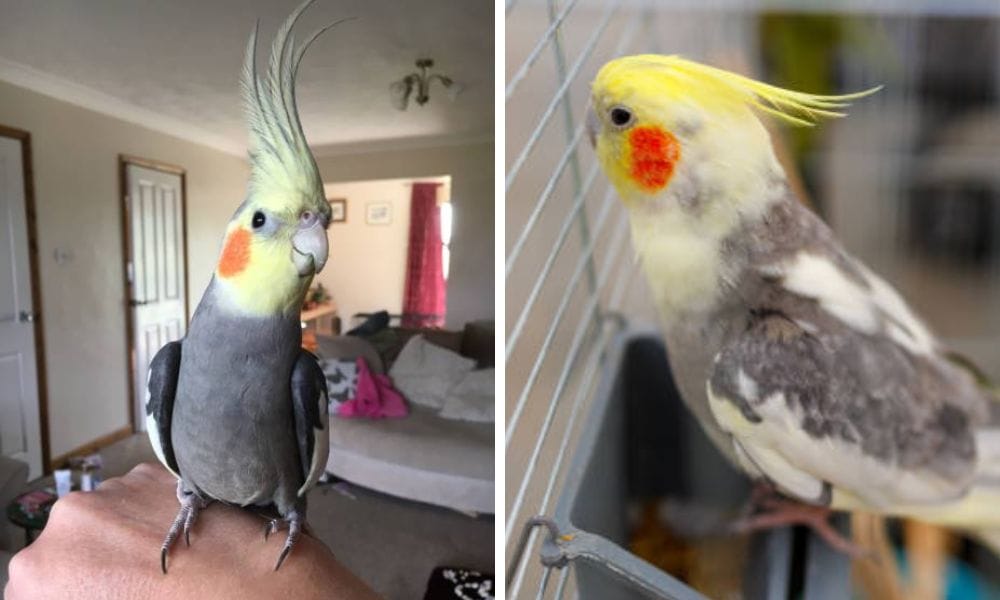
The Impact of Color on Behavior
Color mutations can influence the behavior of yellow cockatiels. For example, the lutino pearl cockatiel, with its light yellow body and speckled wings, may exhibit different mating behaviors compared to the normal grey cockatiel. The bright orange cheek patches and yellow head of the lutino mutation are also thought to play a role in attracting mates and establishing hierarchy within a group.
Dietary Needs and Social Eating
Yellow cockatiels, like other pet birds, have specific dietary needs that must be met for optimal health. In a social setting, these birds may enjoy eating together, which can strengthen their bonds with other pets. A balanced diet consisting of seeds, pellets, fruits, and vegetables is essential for maintaining their vibrant plumage and overall well-being.
The Influence of Genetics on Interactions
The genetics of yellow cockatiels, particularly the lutino gene, can affect their interactions with other pets. Some studies suggest that lutino cockatiels may be more prone to certain health issues, which could impact their social behavior. It's important for pet owners to be aware of these potential genetic factors when considering a lutino cockatiel as a companion for other animals.
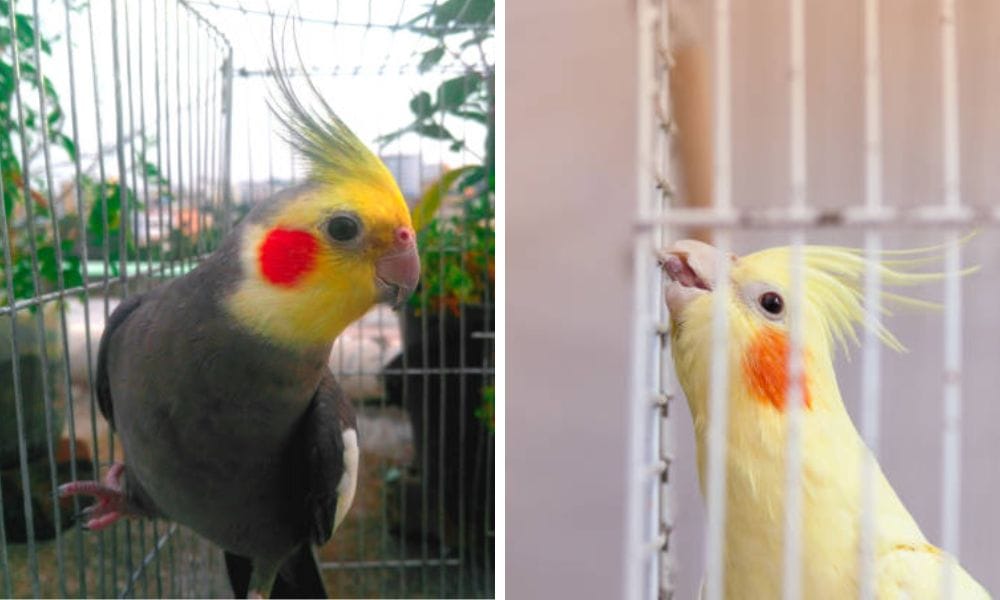
Observing Body Language and Vocalizations
To understand the interactions of yellow cockatiels with other pets, observing their body language and vocalizations is key. A cockatiel with relaxed facial feathers covering its beak and a calm posture is likely comfortable in its environment. Vocalizations such as chirping and singing can indicate happiness, while hissing or growling may signal distress or discomfort.
Training and Bonding Activities
Engaging in training and bonding activities can enhance the relationship between yellow cockatiels and other pets. Simple tricks, such as stepping up onto a finger or responding to their name, can build trust and communication. Additionally, allowing supervised playtime outside the cage can provide opportunities for positive interactions with other pets.
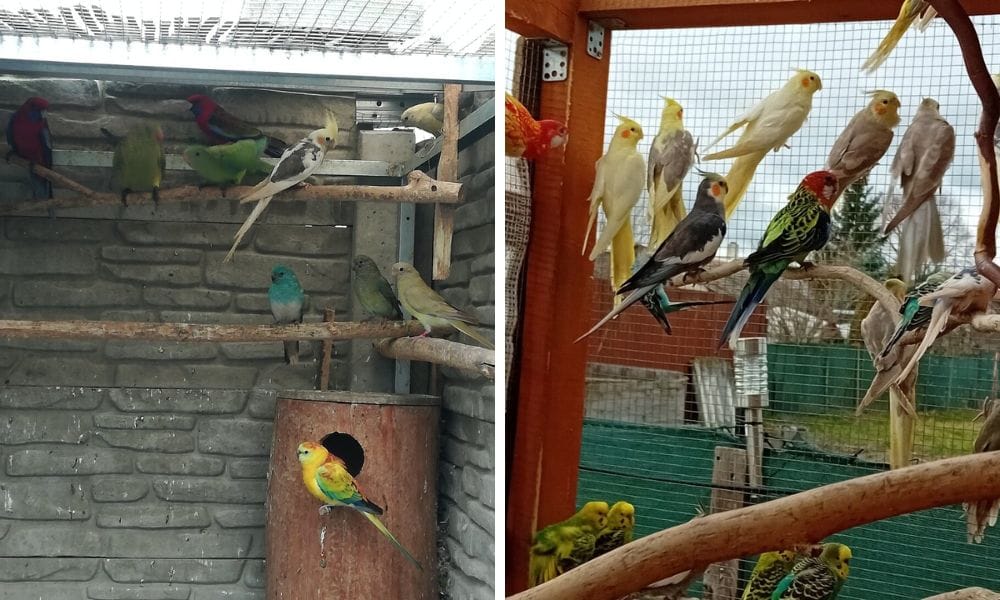
The Role of Breeders and Aviculturists
Breeders and aviculturists, like Cliff Barringer, play a significant role in the socialization of yellow cockatiels. By exposing young birds to a variety of stimuli and environments, they can help prepare them for interactions with other pets. Responsible breeding practices also ensure the health and temperament of these birds, making them better companions for other animals.
The Future of Yellow Cockatiels in Multi-Pet Households
As the popularity of yellow cockatiels continues to rise, their place in multi-pet households becomes increasingly important. By understanding their social needs and behaviors, pet owners can create harmonious living situations for these charming birds and their animal companions.
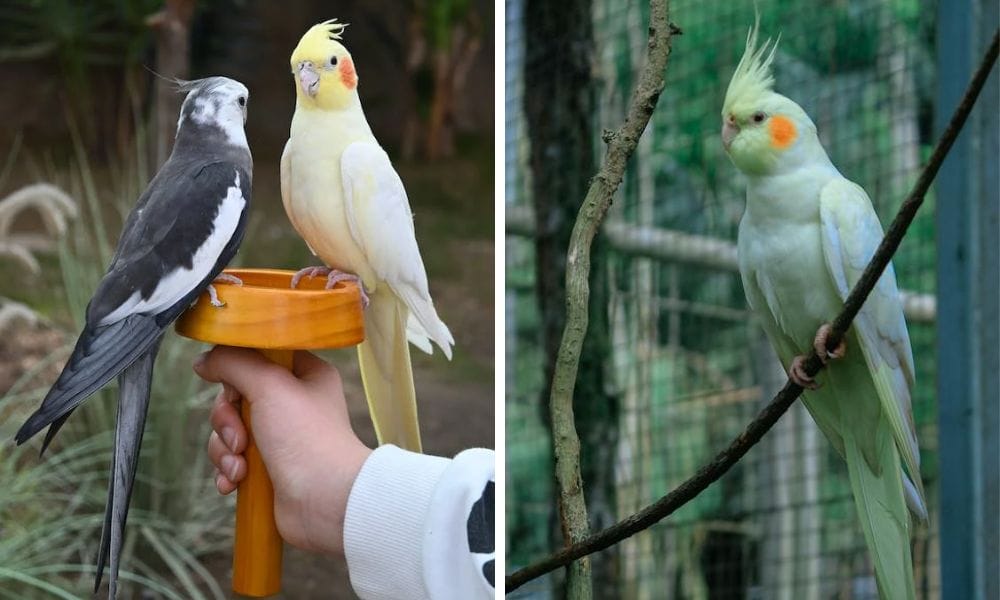
Summary
Yellow cockatiels, particularly those with the lutino mutation, are not only visually stunning but also possess a sociable nature that allows them to interact charmingly with other pets. Through careful introduction, understanding of social dynamics, and consideration of housing and dietary needs, these birds can form meaningful bonds with a variety of animal species. Case studies, such as the friendship between a lutino cockatiel and a dog, highlight the potential for interspecies companionship. As pet owners continue to explore the delightful world of yellow cockatiels, the importance of responsible breeding, training, and socialization becomes ever more apparent.
FAQ Section
Q: Can yellow cockatiels live with other bird species? A: Yes, yellow cockatiels can live with other bird species, but introductions should be done carefully to ensure compatibility and prevent territorial behavior.
Q: Are lutino cockatiels more prone to health issues? A: Some studies suggest that lutino cockatiels may be more susceptible to certain health conditions due to their genetic makeup. It's important for owners to be aware of these issues and provide appropriate care.
Q: How can I encourage positive interactions between my yellow cockatiel and other pets? A: Positive interactions can be encouraged through supervised playtime, training sessions, and by providing a safe and stimulating environment that meets the needs of all pets involved.

